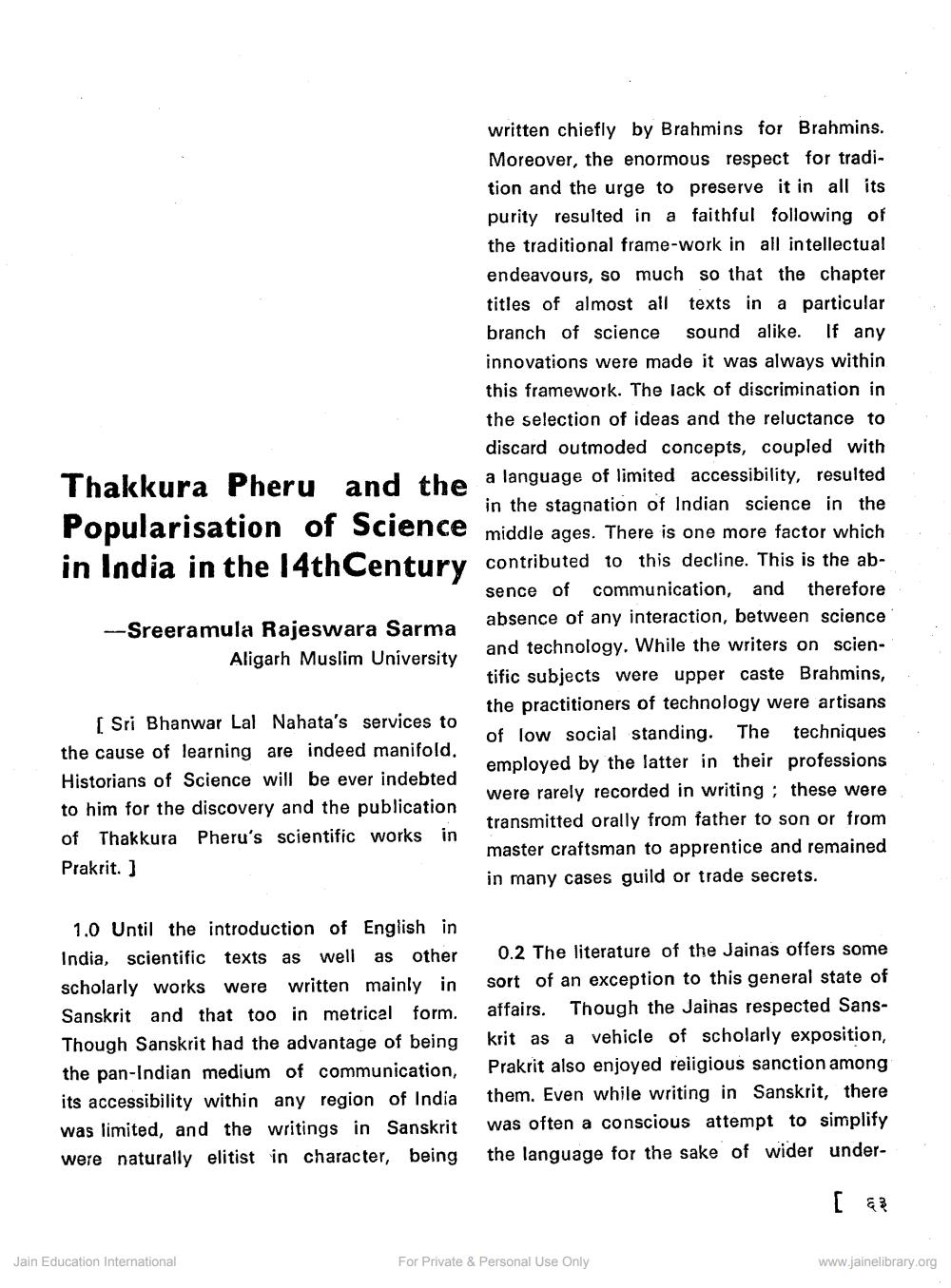Book Title: Thakkura Pheru and Popularisation of Science in India in 14th Century Author(s): Sreeramula Sarma Publisher: Z_Bhanvarlal_Nahta_Abhinandan_Granth_012041.pdf View full book textPage 1
________________ written chiefly by Brahmins for Brahmins. Moreover, the enormous respect for tradition and the urge to preserve it in all its purity resulted in a faithful following of the traditional frame-work in all intellectual endeavours, so much so that the chapter titles of almost all texts in a particular branch of science sound alike. If any innovations were made it was always within this framework. The lack of discrimination in the selection of ideas and the reluctance to discard outmoded concepts, coupled with Thakkura Pheru and the a language of limited accessibility, resulted in the stagnation of Indian science in the Popularisation of Science middle ages. There middle ages. There is one more factor which in India in the 14th Century contributed to this decline. This is the ab sence of communication, and therefore --Sreeramula Rajeswara Sarma absence of any interaction, between science Aligarh Muslim University and technology. While the writers on scientific subjects were upper caste Brahmins, the practitioners of technology were artisans [ Sri Bhanwar Lal Nahata's services to of low social standing. The techniques the cause of learning are indeed manifold. employed by the latter in their professions Historians of Science will be ever indebted were rarely recorded in writing ; these were to him for the discovery and the publication transmitted orally from father to son or from of Thakkura Pheru's scientific works in master craftsman to apprentice and remained Prakrit.] in many cases guild or trade secrets. 1.0 Until the introduction of English in India, scientific texts as well as other scholarly works were written mainly in Sanskrit and that too in metrical form. Though Sanskrit had the advantage of being the pan-Indian medium of communication, its accessibility within any region of India was limited, and the writings in Sanskrit were naturally elitist in character, being 0.2 The literature of the Jainas offers some sort of an exception to this general state of affairs. Though the Jainas respected Sanskrit as a vehicle of scholarly exposition, Prakrit also enjoyed religious sanction among them. Even while writing in Sanskrit, there was often a conscious attempt to simplify the language for the sake of wider under Jain Education International For Private & Personal Use Only www.jainelibrary.orgPage Navigation
1 2 3 4 5 6 7 8 9 10
